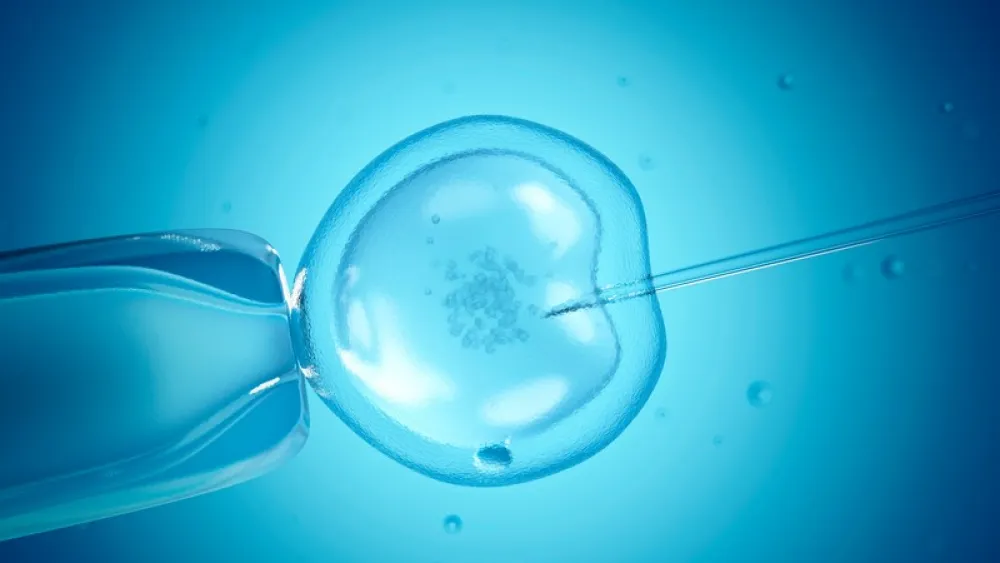




Busting 4 Myths about IVF


Modern-day technology
Technology today is really amazing. Who knew 15 years ago we would carry around tiny handheld computers with all the knowledge of the Internet at our fingertips?
Growing up, I had my first computer when I was in high school. Today, my two-year-old knows how to use my iPad with ease.
With infertility, we rely daily on technology to help couples conceive. The most common technology we use is the process of in vitro fertilization (IVF).
What is IVF?
In vitro fertilization is a process by which the ovaries are carefully hyperstimulated using injectable medications. Once follicles (fluid sacs around the eggs) reach a certain size, the eggs are removed vaginally using a thin needle in a process called egg retrieval.
Fertilization of those eggs then occurs “in vitro” in our laboratory. The resulting embryos are grown in an incubator for five days until they reach the blastocyst stage. After five days, the growing embryo(s) are transferred into a woman’s uterus for the remainder of development. Extra embryos are safely frozen for later use. A pregnancy test done eight days later determines whether or not the treatment worked.
Misconceptions and myths
As with every technological advancement and controversial medical innovation, there are bound to be myths that develop along the way. As an infertility specialist, I commonly educate and help clear up the many misconceptions patients have about IVF. Below are the four most common myths we hear regarding IVF.
1. You will become “Octomom.”
The process of IVF does include hyperstimulation of the ovaries. During this process, a woman takes daily injectable medications and we carefully watch the development of follicles using bloodwork and ultrasound. The eggs are removed before fertilization takes place and the actual fertilization takes place in our laboratory. We then can control the number of embryos transferred back to your uterus. In 2015 in the United States, the rate of twins with IVF was only 12.8 percent. Risk of triplets or higher was only 0.8 percent.
2. The success rate for IVF is 100 percent.
Unfortunately, despite dramatic improvement in technology since it began in 1978, success for IVF is not 100 percent. Average success rates depend on the mother’s age group. In the U.S., success rate per egg retrieval in 2015 was 43.4 percent in women under the age of 35 and only 12.5 percent in women ages 41-42.
I always remind patients to keep these numbers in perspective with natural conception rates. Any woman trying to conceive has an approximately 20 percent chance of achieving pregnancy each month. Those with diagnosed infertility generally have less than a five percent chance each month depending on the infertility diagnosis.
Bottom line, IVF is a very successful treatment for women wanting to become pregnant, but is not 100 percent.
3. The needles for the injectable medications are huge and the injections make you crazy.
Most of the needles used for daily injections are small and similar to those used for insulin injections for diabetes patients. As part of treatment, our office provides injection teaching so you can feel comfortable doing them at home. They are generally very well tolerated.
And let’s face it, infertility is so hard. SO HARD. It is an emotional journey from start to finish. Some degree of anxiety and fear throughout the process can be very normal. While the diagnosis of infertility is very isolating, it is important to remember that those going through IVF are not alone.
In 2015, 68,000 babies were born using assisted reproductive technology. In Nebraska we have a successful support group for those going through infertility called Conceive Nebraska. Nationally, the organization Resolve is excellent when it comes to patient information and patient advocacy. I encourage anyone struggling with infertility to reach out to these two resources.
4. Frozen embryos are less effective than fresh embryos.
Freezing technology has drastically improved the success rate of frozen embryo transfers. In fact, many studies show frozen embryo transfers have improved pregnancy outcomes including term delivery and higher birth weights. Success rates for frozen embryo transfers particularly increases in patients who respond well to the medications and are at-risk for hyperstimulation during their fresh cycle. In 2015, national success rates for frozen embryo transfers mirror those for fresh transfers: 42.8 percent in women under the age of 35 and are 27.7 percent in women ages 41-42.
Well there you have it, the top four myths we hear at Methodist Reproductive Health Specialists regarding IVF. As always, we are available for consultation should you have any questions regarding infertility treatment.

